
























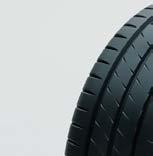






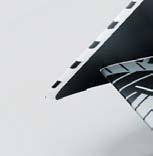













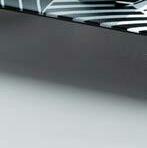

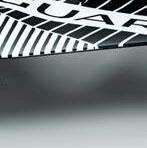
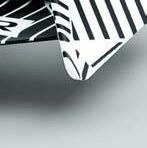



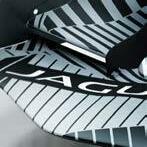

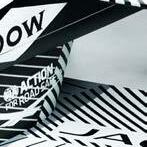
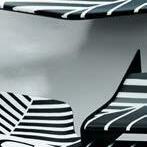
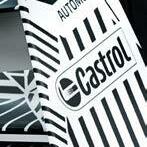

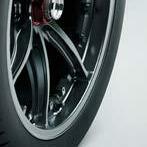



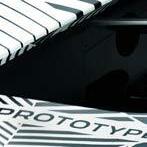
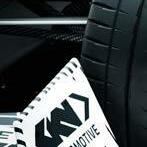





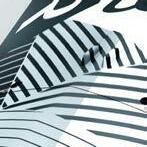
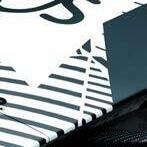

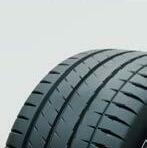




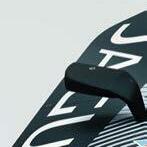

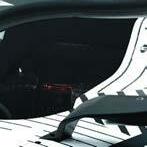






Inside the world of modern motorsport technology ALPINE FORMULA 1 Tech chief reveals the secrets of GP challenger PERFORMANCE BALANCING Questions and answers on the black art of BoP MCR SPORTS 2000 Welsh constructor with a university challenge ECO FIBRE The latest in environmentally friendly composites for racing UK £5.95 / US $14.50 November 2022 / Vol 32 No 11 Behind the scenes in testing for new Season 9 cars Formula E Gen 3 We visit the FIA WEC team workshop United Autosports
to the suspension. It’s a very different load transfer through the car, through the suspension, through the wishbones and into the main case.’
It’s certainly going to be a fascinating aspect of how teams and drivers use their cars on the wide variety of temporary and semi-permanent venues Formula E uses.
The manufacturers received their single test and development cars from Spark Racing Technologies in May, yet such was the pace of the final races of 2022 (eight races from June to August) that only a modest amount of running was achieved by the end of September.


Group test




A specially arranged group manufacturer test was arranged for mid-September where, among other things, the first fast charging pit stops were trialled and a problem with the cells of the spec RESS are believed to have been investigated further.
The manufacturers now have just two months until the traditional pre-season test in Valencia, and that short time period includes homologation of the cars, which will then be locked in for the first two seasons of the Gen 3 rule set through 2023 and 2024.

With all the brake systems around the regen’ now being different, Charles thinks it unlikely any team would be in a position at present to claim all their systems are perfect and they’ve got their car balance spot on. It’s a big learning curve for all involved.
Much of which will inevitably come back to the vehicle dynamics, and how they are adapting to the Hankook rubber, which is so far said to be highly durable.
‘It has a low wear rate,’ says Charles. ‘That’s a risk for them coming into that big step up in power, and also not knowing the tracks.
‘Formula E is very specific, and the tracks we go to over the course of a season are very different. It can be a car park surface one month, and a street surface the next, it’s a real mix of surfaces and they’re all very different to a normal racetrack.

‘They must have taken a view that they haven’t got that data set. They haven’t gone and tested because you can’t get access to a track. You can’t go to New York, have a look and measure that great big shipping area.’

New and improved

It won’t just be the power, energy and tyres that will be new and improved for Gen 3 racing. Finally, Formula E will have driveshaft torque sensors fitted, similar to those being used in the Hypercar era of endurance racing, which contribute to the BoP process.
 Further technological developments include brake-by-wire, recycled carbon fibre and driveshaft torque sensors, with four-wheel drive on the horizon
With battery cooling less of a concern in the Gen 3 package, aerodynamics have taken on a more familiar form
The Hankook tyres are said to be very durable, but only one compound is allowed and there are multiple track surfaces
Further technological developments include brake-by-wire, recycled carbon fibre and driveshaft torque sensors, with four-wheel drive on the horizon
With battery cooling less of a concern in the Gen 3 package, aerodynamics have taken on a more familiar form
The Hankook tyres are said to be very durable, but only one compound is allowed and there are multiple track surfaces
‘It’s a very different load transfer through the car, through the suspension, through the wishbones and into the main case’
Phil Charles, technical manager at Jaguar
10 www.racecar-engineering.com NOVEMBER 2022
FORMULA E GEN 3
Supplied by MagCanica, the sensors are fitted directly onto the driveshaft using a bearing-grade plastic. The torque sensor housing is axially constrained using a groove in the housing that interfaces with a mating feature on the sensor housing.
The system has extensive magnetic shielding, integrated seals and cutting-edge electronics and firmware that achieves 0.25 per cent in-vehicle accuracy. Only DC power needs to be provided, and the measured torque signal is returned over CAN, along with additional diagnostic information.
‘In our case, they’re going to be used more for what we call ‘a tunnel’, so they’re more a control window for us to work within,’ explains Charles. ‘It’s a slightly different usage, but the technology is proven, and it should work well.
‘There’s a little bit of integrating required for the extra kit, but they fit nicely towards the outboard end of the driveshaft with a measurement sleeve almost that goes around the centre.’
While the manufacturers work flat out to get their Gen 3 packages ready to be homologated in the first week of November, some are openly talking about
Thoughts on racing without brakes!
TheGen 3’s maximum regenerative braking capacity of 600kW means a first for a very long time in a racecar, the rear axle of the Gen 3 will not feature hydraulic brakes at all.
Despite being slightly apprehensive about this prior to his tests in late 2021 and early 2022, Formula E test driver and three times Le Mans winner, Benoit Treluyer, was effusive in his praise for the speed reducing characteristics of the Gen 3 test car.
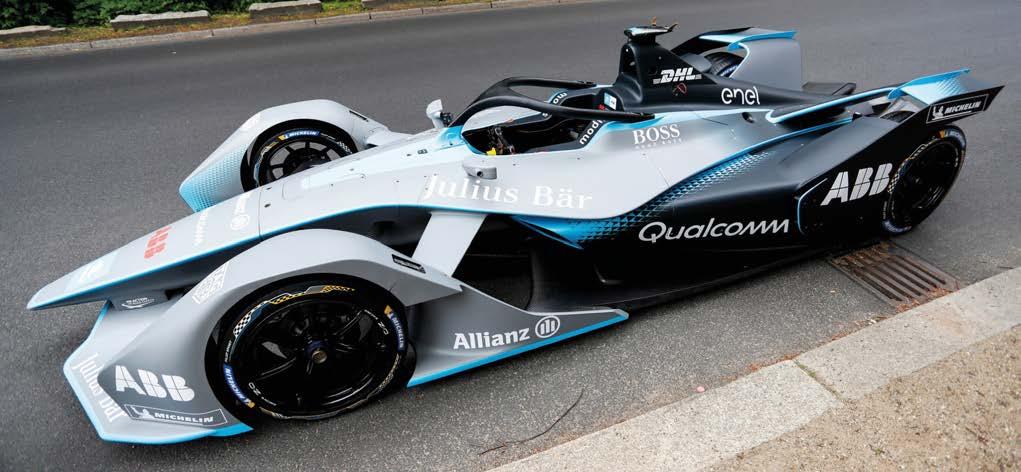
‘It’s a really big change in motorsports, without the [rear] brakes and all the things we have to develop in software and things like that, so it’s a big work we have.

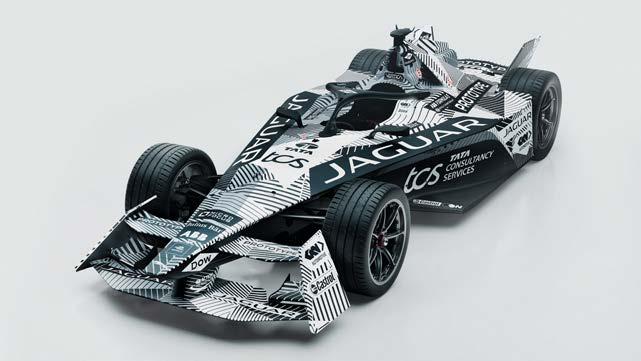
‘I was really impressed because the bite really felt like a normal brake, and I couldn’t believe it wasn’t at the beginning.
‘The good thing is you can use this system very well to handle the car on the brakes and to set up the car, so it’s a really interesting development.’





Treluyer then went one better, saying, ‘It’s actually better than the normal brake, because it’s very consistent and it’s not like you have to play with the temperatures and set up the cooling, which is really good.’
He then said he felt he could work to a ‘new window’ in terms of handling.


‘In the past in Formula E, the brakes were a bit of a problem to keep in the right window, but this system is actually a really good tool to work with,’
Overall set-up is therefore likely to be even more crucial with the Gen 3 car than it has been in previous generations of Formula E, but again Treluyer was positive about the challenge: ‘Every time we’ve done a small adjustment, the car has answered really well. It’s actually very good to drive and to set up.
‘And then to enter a corner and control the brakes going into the corner is quite easy if you set the car up really well.’
The Gen 2 car was introduced for season five (2018) and had better battery capacity than Gen 1. Cooling was an issue though, and played an integral part in the design of the car
NOVEMBER 2022 www.racecar-engineering.com 11
Inner vision
The use of metrology in motorsport has increased significantly over recent years, thanks to improvements in systems, coupled with the ever more challenging reliability and durability targets being imposed across many forms of racing
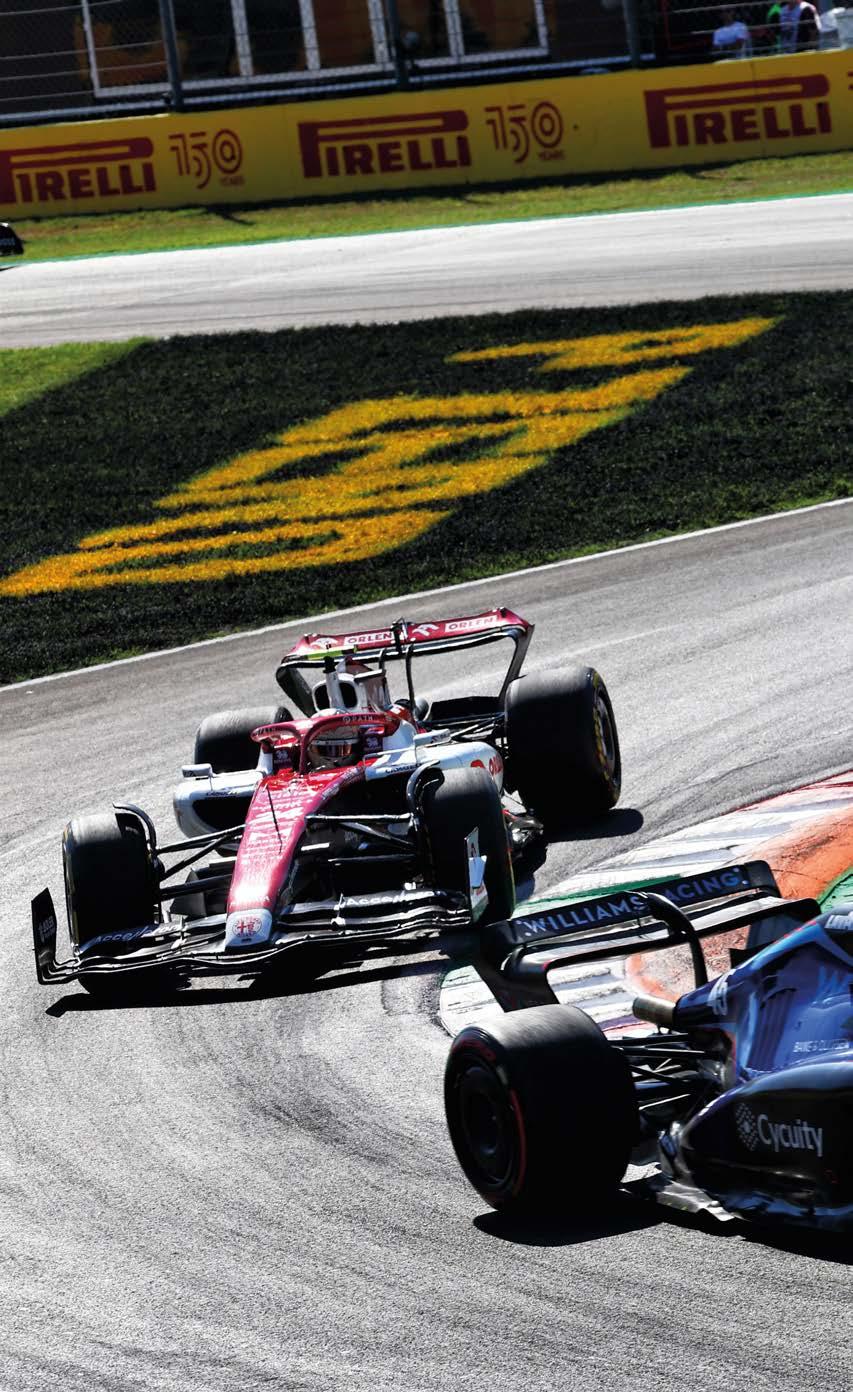 By STEWART MITCHELL
By STEWART MITCHELL
Metrology is the science of measurement. Motorsport uses it at each stage of a racecar’s manufacture and development to ensure part tolerances, surface finishes, geometries and internal structures are all to the desired specification.
This use of metrology has increased significantly over recent years, and the range and number of metrology devices used in motorsport today are vast. Without them, racecars may not make the cut when it comes to performance and, in some cases, could suffer complete failure.
The spike in uptake of this technology is thanks to improvements in the metrology systems themselves, coupled with the increasingly challenging reliability and durability targets being imposed across many forms of racing.
To truly validate the geometry and construction of the components that make up racecar sub-assemblies, engineers must go beyond the basic measuring tools, such as Vernier calipers, rulers and tapes. Way beyond. Although the range of metrology systems used by modern racecar manufacturers are vast, here we cover the science behind coordinate measurement machines (CMM) and computed tomography (CT) scanners.
Axes of inspection
A CMM exploits three orthogonal axes – x, y and z – operating in a 3D coordinate system and provides precise dimensional inspection of manufactured parts. As such, they are integral to many measurement and quality control processes in a wide range of industries.
Do you know your CT from your CMM? Racecar investigates the latest developments in metrology
46 www.racecar-engineering.com NOVEMBER 2022
TECHNOLOGY MEASURING TOOLS
A CMM exploits three orthogonal axes – x, y and z –operating in a 3D coordinate system and provides precise dimensional inspection of manufactured parts


NOVEMBER 2022 www.racecar-engineering.com 47 XPB
United front
BY ANDREW COTTON
The world of LMP2 racing changed beyond all recognition in the FIA World Endurance Championship following the introduction of the new prototypes in 2017. ORECA, Dallara, Ligier and Multimatic were selected as chassis suppliers for the new category and built cars to a new rule set written by the FIA.
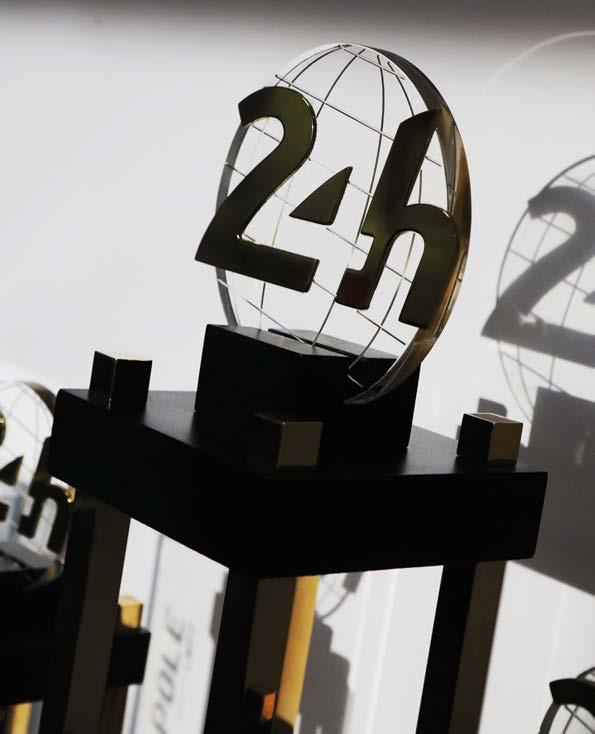
Immediately following their introduction, lap times dropped in every round of the WEC. At Le Mans, the improvement from 2016 (3m36.259 in race conditions) with the old car to 2017 (3m28.632) was just the start. Race lap records continued to fall. United Autosports driver, Paul Di Resta, set a record time of 3m24.528 in 2020 qualifying before the FIA stepped in to slow them down.
The introduction of the Hypercar class made things even more complicated as the new cars are slower than the old LMP1s, and manufacturers complained that the LMP2 cars was still too quick. They demanded the LMP2 cars be slowed and the FIA acquiesced.
Through a series of measures, the organising body reduced performance by nominating a
single tyre supplier, Goodyear, and specifying to them the required increase in lap time through tyre performance alone. They also took away options for gear ratios, body kits and wings which made the cars less performant, and more difficult to drive; not ideal for a customer-focused category. Not only that, but the measures also placed an increased emphasis on the team to do a better job, and that means delving deeper into the details. To that end, the LMP2 teams have increased their capabilities to whole new levels and, in doing so, the best have made previously perfectly decent l LMP2 teams look average.

Winning ways
One of those to have risen to the challenge is United Autosports.
The Anglo-American team is based in Yorkshire, UK and it has won pretty much all there is to win in the prototype classes of the European Le Mans Series and the World Endurance Championship.
The team is co-owned by Zak Brown, a man who made his reputation through a series of sponsorship deals in Formula
In the hotbed of LMP2 and LMP3 racing, United Autosports has found a natural home. It has mixed young and experienced drivers, and is now preparing for greater prototype challenges
There aren’t many trophies in the prototype classes of the ELMS or WEC the team hasn’t won
Inside the vast packing room, where each programme has its own dedicated bays and inventory sheets
72 www.racecar-engineering.com NOVEMBER 2022
BUSINESS UNITED AUTOSPORTS
1 and who is now the CEO of McLaren Racing Limited, and Richard Dean, a former racing driver who has since shown an aptitude for running a race team.
The two are great friends; Brown was even best man at Dean’s wedding. Having secured his race licence from the Skip Barber school in the US, Brown wanted to be a grand prix driver, so came to the UK to achieve his ambition. ‘Zak came over to do the Jim Russell school, which was a weeks’ course, and I was his instructor,’ recalls Dean. ‘Then, at the end of the course, he was like “I’m going to be a racing driver, I am not going home. I don’t know anyone in England, help me.”’
Convoluted route
After the collapse of his Vauxhall Lotus deal in Europe, Brown found himself sleeping on the sofa at Dean’s sister’s house as he had nowhere else to stay, and his former race instructor was in the process of moving house himself.
They stayed in touch as their respective worlds righted themselves, and eventually they decided they should start their own racing team. Both had found themselves making a new start in the UK, and figured they could work together.
‘I had worked with Lawrence [Tomlinson] setting up the Panoz [GT project], and then, when he bought Ginetta, I started running that company,’ explains Dean. ‘I revamped the junior series, got it onto the British Touring Car package, and ended up sitting on the board as MD of one of Lawrence’s successful companies, listening about care homes and
construction, thinking how did I end up here?
‘Zak had opened his London office and was thinking about moving to the UK with his family. We had always kept in touch, but were doing separate things. One day I was moaning to him about how I wanted to get back into the competitive side of motorsport. Zak said he was moving to England, and that he was doing the Ferrari Challenge, so we said let’s get an Audi GT3 car and a truck.

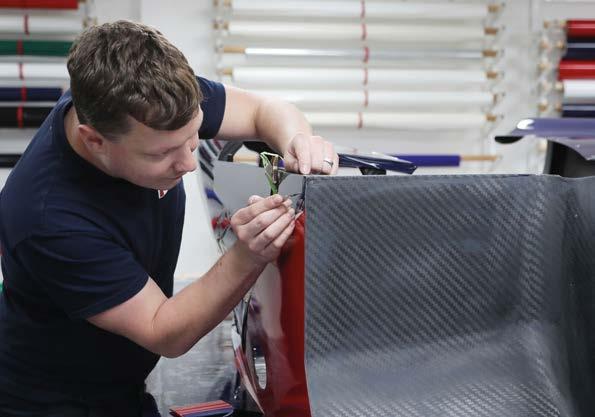
‘We decided to set the team up, and called it United Autosports because of the United States and United Kingdom, and because we couldn’t think of anything better. We paid £500 for the website domain and logo and that was it. We did some British GT races, and then it took off.’
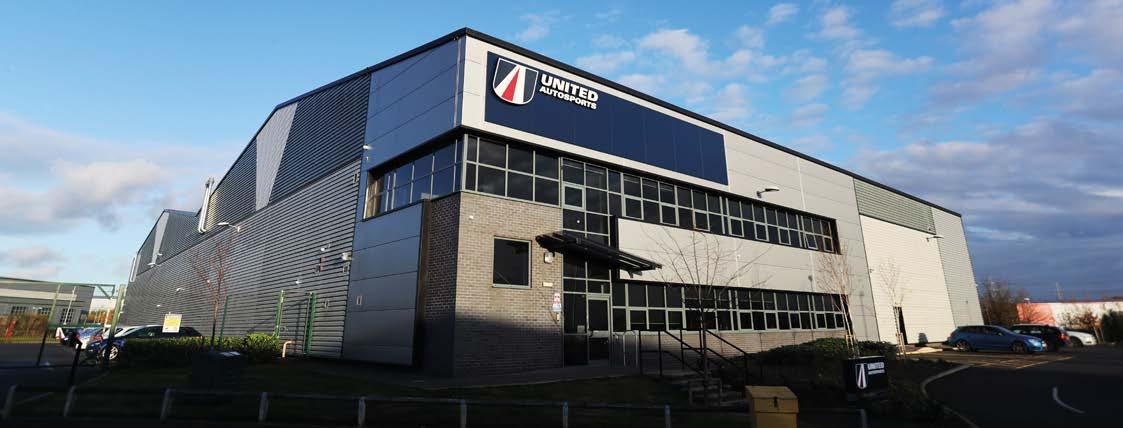
The team started GT racing in 2010, running Audis and then McLarens and were immediately successful. They lined up star drivers at Macau and finished up with a run of three podium finishes at the Macau Grand Prix. They took on a British Touring Car Championship programme with Toyota Avensis in 2014 and made their prototype debut in 2016 in the LMP3 class of the European Le Mans Series at the Four Hours of Silverstone, claiming the top two places on the podium.
Testament to the team’s expertise, the successes kept rolling in. In 2017, United Autosports won the ELMS LMP3 title, and in 2018 finished third at the 24 Hours of Le Mans in the LMP2 class. By 2020, the team had won the LMP2 class at Le Mans, the LMP2 FIA World Endurance Championship title, having
team has won
much
there is to
in the
and
NOVEMBER 2022 www.racecar-engineering.com 73
The team is now housed in a new 62,000ft2 industrial unit outside Leeds, UK Inside are highly professional assembly bays, a sub-assembly shop and a raft of engineers with the skill sets required to undertake all aspects of racecar maintenance and preparation The Anglo-American
pretty
all
win
prototype classes of the European Le Mans Series
the World Endurance Championship
Magic markers
What the magic number really means, and tying it down with simulation
By DANNY NOWLAN
If you have been in the motorsport business for any length of time, you will have heard the term the magic number.

This refers to the percentage of front lateral load transfer distribution at which the car produces the most grip. Like with many things in this business, it’s a term that tends to get thrown around like a football, with some people swearing by it and others thinking it is totally irrelevant.
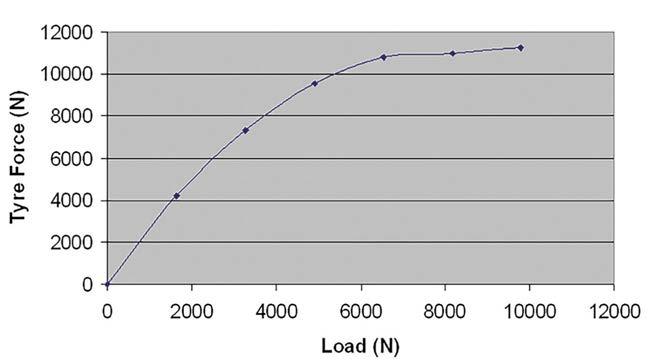
However, if you ever have to construct a simulation model, you are in a very strong position to put some numbers to the discussion. This is the focus of this article.
Here, using a fantastic case study of one of the by products of racecar simulation, we will show how we can use a tyre model derived from actual data to delve into what the magic number actually means.
You have the power
One of my perpetual frustrations with this business is how many engineers seem to have no comprehension of the power of what they have in their hands when they use a racecar simulation package. I have said time and time again that lap time, and the data you get from that, is the full stop at the end of the process. As you are about to see, what you learn in the process of reaching that point is the pay off.
To kick off this discussion, let’s return to the most basic tyre model you can have, which is the second order traction circle radius vs load curve fit for a tyre. Mathematically, what we are talking about is shown in equation 1. Some typical values for this are presented in Table 1
When you plot this out, you’ll have something that looks like Figure 1.
As we discussed in a recent article about tyre modelling from scratch, using a simulator such as ChassisSim, you can fill in the blanks for this very quickly.
Table 1:
Parameter
(1)
Where,
TCRAD = traction circle radius (N)
a = initial coefficient of friction
b = coefficient drop off with load
F = load on the tyre (N)
ΔLF = delta load at the front (N)
ΔLR = delta load at the rear (N)
m = total mass (kg)
pr = lateral load transfer (scaled from 0 - 1)
a = lateral acceleration (m/s2) = c of g height (m)
tm = mean track (m)
66 www.racecar-engineering.com NOVEMBER 2022
TECHNOLOGY SIMULATION
Fig 1: Second order plot of the traction circle vs load characteristic (2)(()() ) () () 2 0 2 00 1122 02 01 22 122 11 LkkL TC LkkLLkk LLkLLkkF LLL LLL RADba abba aybb ×D×××-= D×××-×-×× = ×+×-× = D-= D+= (3)() tm hampr L tm hampr L yt R yt F ×××=D ××× =D 1 Where,
zzbaFFkkTCRAD××= )1(
Typical open wheeler numbers for maximum tyre force with the coefficient of friction dropping off linearly with load
Value ka 2 kb 5.0 e-5 (1/N)
Where,
Fyt = total lateral force in N
TCRAD_F = traction circle of the front tyre function (N)
TCRAD_R = traction circle of the rear tyre function (N)
LSF = front corner weight in N
LSR = rear corner weight in N af = front tyre initial coefficient of friction bf = coefficient of front tyre drop off with load ar = rear tyre initial coefficient of friction br = coefficient of rear tyre drop off with load
However, where things become interesting is when we take into account lateral load transfer and use equation 1 to quantify what will happen to the lateral forces on the tyres. For a given load transfer couple we have as shown in equation 2
Given a lateral load transfer factor of pr, the front and rear load deltas will be given by that shown in equation 3
At this point in the discussion, you may be thinking, so what? Well, what all this mathematics means is that for a given lateral load transfer distribution, a given lateral acceleration and a given tyre model we can calculate the maximum possible grip for a given cornering situation. Mathematically, this can be expressed as equation 4.
Where things become more interesting is when we expand equation 4, because it becomes a function of the lateral load transfer distribution. Doing that gives us that shown in equation 5
In this case, the Fy0 term is all the nonlateral load transfer terms in N. Where it becomes really interesting is when we derive equation 5 by the lateral load transfer term pr. Setting this to zero, the lateral load transfer distribution that will give us the most grip is given by equation 6

This is the origin of the magic number and, if you have done the homework using your simulation software to reverse engineer the tyres from race data, you are now in a position to plot this out. This is illustrated in Figure 2
What is even more exciting is that it will tell you the sensitivities of the situation, which in the Figure 2 case was 1400N. What equation 6 tells us, then, is the magic number is purely a function of the tyres and what they want.
Rear-wheel drive
However, there is more to this story than meets the eye. In equation 6 we have considered the tyres purely in cornering. Let’s now consider the case where we have identical tyres front and rear, but the car is rear-wheel drive. Let’s say we multiply the available force from the rear tyres by a factor of eTE, which is scaled between zero and one. The case of one represent us having all the available traction circle radius for cornering and zero is when it is all used for accelerating. Equation 6 will then become as shown in equation 7
Now let’s put some numbers to this. Let’s set eTE to 0.9 and assume the tyres are the same front to rear. Since all the ka and kb terms are identical, we have equation 8
What this is saying is that for this rearwheel drive case we want 47.3 per cent of the load transfer at the front. So, for maximum lateral grip, we want the car to have its weight transfer biased to the rear.
NOVEMBER 2022 www.racecar-engineering.com 67
() () () 2 2 1 2 2 22 ÷ ÷ ø ö ç ç è æ ××××××÷ ÷ ø ö ç ç è æ ×××=+ tm kkhampr tm kkhampr FTCLTCL yt brar yt bfaf ytRADSFFRADSRR ( ) 2 2 2 0 4 22 ÷ ÷ ø ö ç ç è æ ×× + ÷ ÷ ø ö ç ç è æ =+ tm ham kkpr tm ham kkkkprFF yt brar yt ytybgafbrar brarbfaf brar kkkk kk pr ×+× × =
(4) (5) (6) Fig 2: A plot of maximum lateral grip vs lateral load transfer distribution (7) (8) bfafTEbrar TEbrar kkekk kke pr ××+× ×× = 473.0 9.01 9.0 = + =pr
The same analysis can be done for automotive interiors. Conventionally, manufacturers use thermoplastics such as Injection Moulded Polypropylene (IMPP), which has a carbon footprint of 6.4kg CO2 eq/m². Replacing this with Natural Fibre Polypropylene (NFPP) reduces this to 3.7kg CO2 eq/m². Combining NFPP with powerRibs drops this further to 2.3kg CO2 eq/m².
A natural fibre composite part with powerRibs can therefore achieve up to 50 per cent less weight, 70 per cent less plastic and 62 per cent lower CO2 emissions compared to standard IMPP interiors.
Carbon emissions
‘Ultimately, we need to reduce carbon emissions in any way we can, because every gain we make emits slightly less CO2 into the atmosphere and reduces the effects of climate change,’ concludes Wacht.
‘Of course, the ideal solution would be to achieve technologies that are 100 per cent sustainable but, if this is not possible right now, then why not aim for 70, 80 or 90 per cent? We often get challenged over the fact we still use epoxy resin, but our materials still reduce CO2 by up to 85 per cent on part level compared to carbon fibre, which is much better than nothing, until we find a fully sustainable alternative.
‘Natural fibre composites may not be applicable for Formula 1 crash structures yet, but that hasn’t stopped McLaren F1 integrating our materials into drivers’ seats and pit stands. So I think society needs to think in this way and minimise the environmental impact wherever we can, whilst continuing the momentum of developing sustainable technologies.’
The perfect platform
Asconcern about climate change gained momentum in 2018, there were question marks over the future of motorsport. After all, it encourages people to travel to circuits and watch cars race in circles that are prepared by teams who travel across the world – all for entertainment purposes. However, as has always been the case, racing provides the perfect platform to drive change. Just as manufacturers followed the ‘race on Sunday, buy on Monday’ model decades ago, the same applies for sustainable technologies today.

‘Motorsport has the power to test, develop, promote and scale sustainable technologies to a global audience,’ highlights Johann Wacht, manager of motorsports and supercars at Bcomp. ‘Often discussions about sustainability in motorsport revolve around the race event itself. Yet all the sustainability initiatives implemented at a racetrack can also be put in place at a football or NBA stadium. The trick with motorsport, though, is that the technology developed on racecars can be directly transferred to the automotive industry, and the cars we drive on a daily basis.
‘It’s this technology transfer to wider society that makes motorsport such a unique platform for developing and scaling sustainable technologies to maximise impact. And why it has such an important role to play in the planet’s future.’
 It’s not just for show either. Here’s Four Motor’s Porsche 718 Cayman GT4 Clubsport MR in competition with its natural fibre composite interior using ampliTex and powerRibs
Manufacturers keen to stress their eco credentials are jumping on board. Here a BMW M GT4 with Bcomp bodywork
BMW M Motorsport
Four Motors
It’s not just for show either. Here’s Four Motor’s Porsche 718 Cayman GT4 Clubsport MR in competition with its natural fibre composite interior using ampliTex and powerRibs
Manufacturers keen to stress their eco credentials are jumping on board. Here a BMW M GT4 with Bcomp bodywork
BMW M Motorsport
Four Motors
NOVEMBER 2022 www.racecar-engineering.com 65
